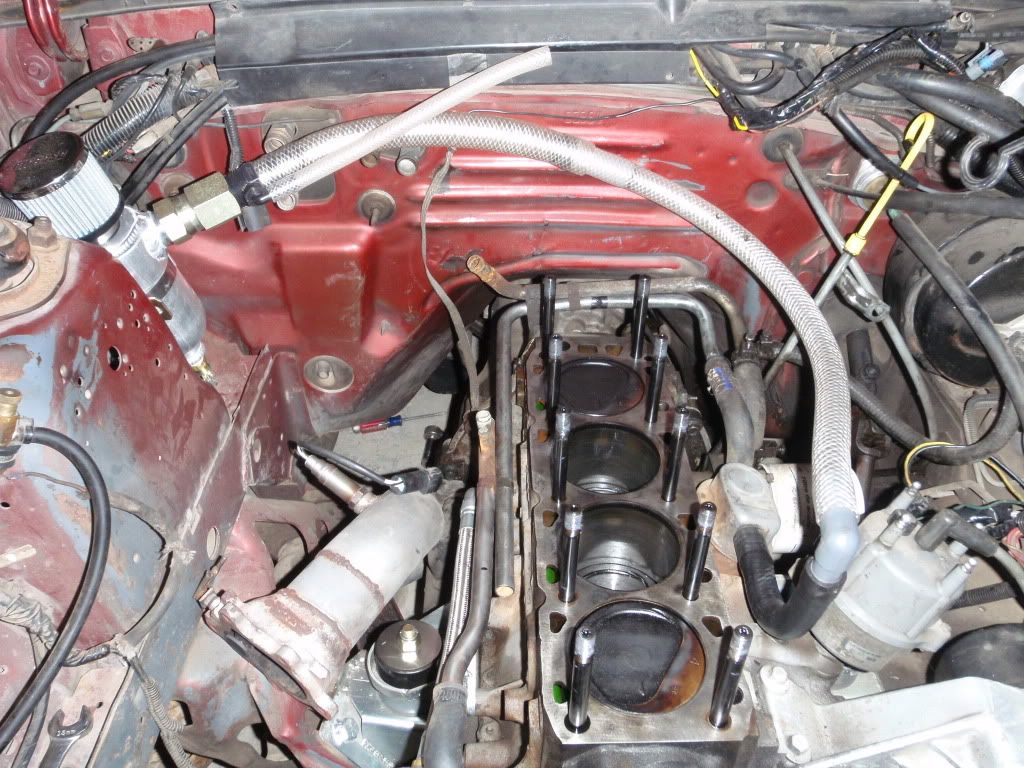I wanted to know y'alls thoughts on Oil Separation in the PCV system. (Also posted at FourEyes)
The 2.3L turbo motor has two oil separators, basically cans that slow the air down enough to help drop the oil out of it, which then drains down back through the same hole it came in.
Not only am I missing the one on the car I recently purchased but it seems these have a tendency to fall out from a few of the complaints I've read on a number of forums.
This has lead me to a dillema...
The person before me simply glued in a PCV valve in the hole with some orange make-a-gasket.
If I were to really separate out the oil I would use a catch can. From what I've seen this can be accomplished with no less than (don't quote me I've never tried this and I'm not experienced enough to really tease out the details either)
* 1/2" NPT to be screwed in where the hole in the block that loosely holds the regular oil separator has been tapped for threads.
* A gutted water separator from any local store which sells Pneumatic parts
* add some adapters and lines to fit.
* A clamp to secure the catch can to something in the engine bay
* Maybe some steel wool or pan scrubber made of metal
The real dilemma, however, is what do I do with the oil? Some ideas I've seen are let it drain back to the oil pan (which would require a feat of engineering as I see it). But others say don't let that junky oil back in, just let it drain onto the road (which seems to defeat the purpose to me). Others throw it out, which is as annoying as having to take out the trash but from your engine compartment.
Perhaps the best thing to do is to just burn the oil then?



 Reply With Quote
Reply With Quote






